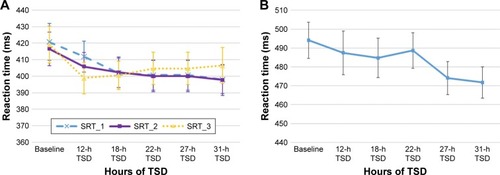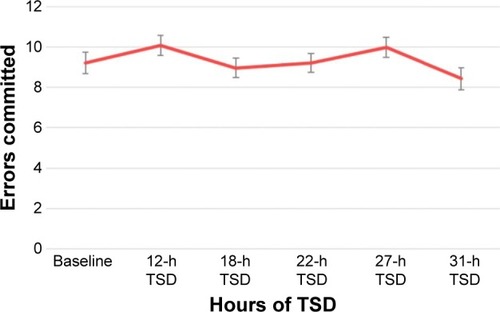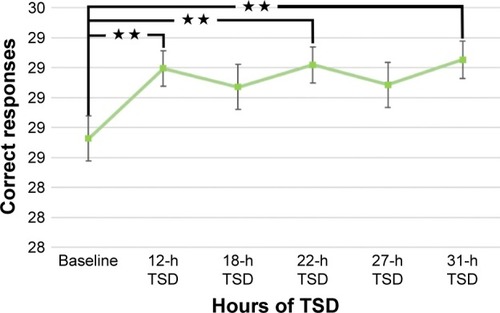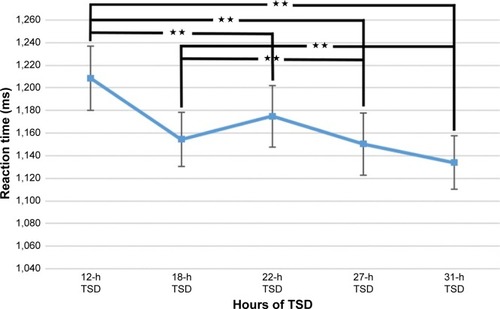Figures & data
Table 1 Baseline biologic parameters of the study population
Table 2 Schedule of neuropsychological assessments taken into analysis
Figure 1 Number of correct responses and errors committed in SRT tests.
Abbreviations: ANOVA, analysis of variance; SE, standard error; SRT, simple reaction time; TSD, total sleep deprivation.

Figure 2 Reaction time in SRT and CRT tests.
Abbreviations: ANOVA, analysis of variance; CRT, choice reaction time; SRT, simple reaction time; TSD, total sleep deprivation.

Figure 3 Number of errors committed in delayed matching to sample (DMS) test.
Abbreviations: ANOVA, analysis of variance; TSD, total sleep deprivation.

Figure 4 Number of correct responses in CRT test.
Abbreviations: ANOVA, analysis of variance; CRT, choice reaction time; TSD, total sleep deprivation.

Figure 5 Reaction time in VAT.
Abbreviations: TSD, total sleep deprivation; VAT, visual attention test.

Table S1 Mean, min, max, SD, and SE values
